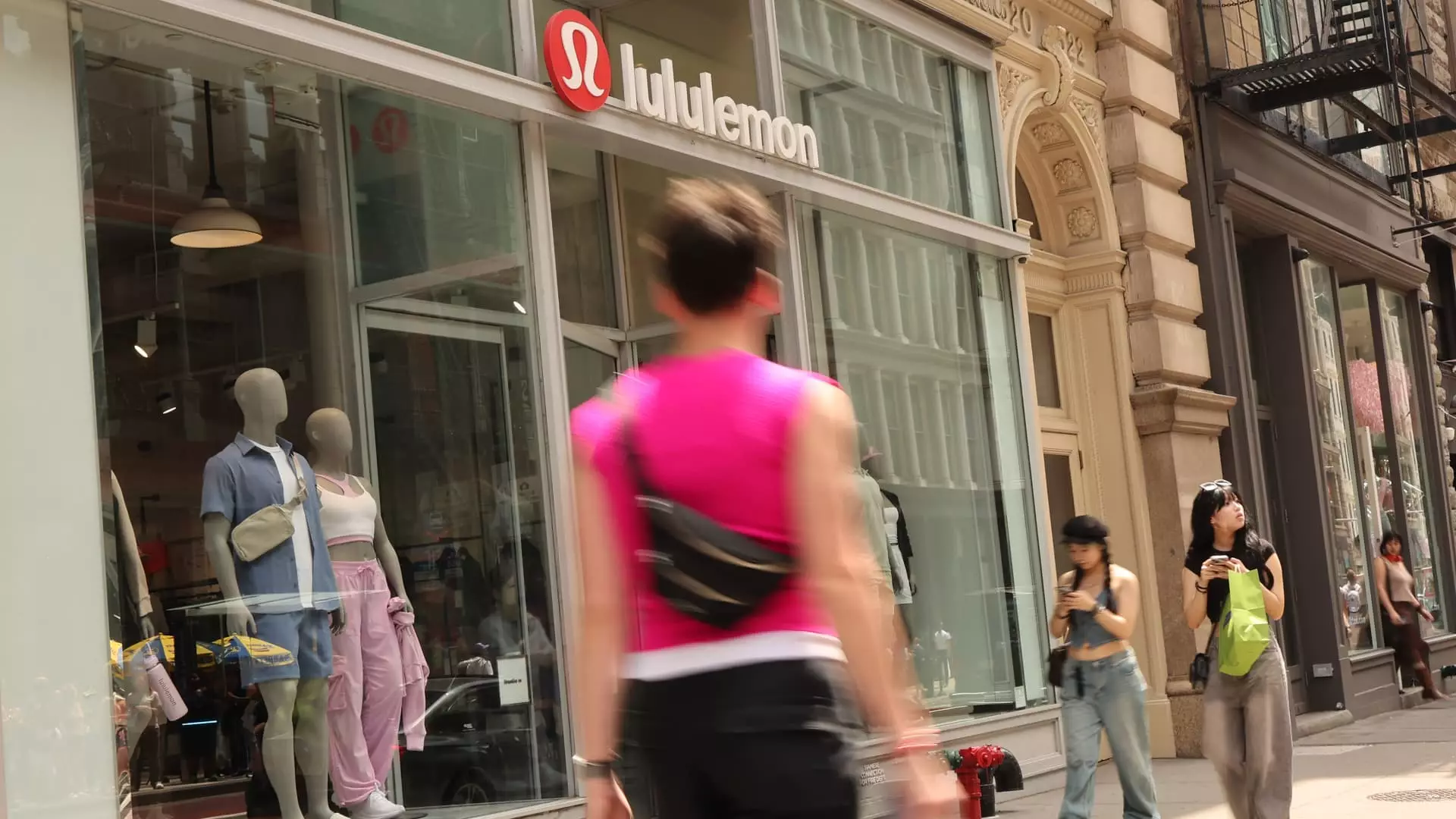Lululemon Athletica Inc., a titan in the athletic apparel realm, recently shocked investors with its significant earnings report. While the company’s first-quarter earnings per share narrowly surpassed Wall Street expectations, a major revelation regarding its full-year guidance sent shares plummeting by 20% in after-hours trading. This dissonance between short-term performance and long-term outlook illustrates the precariousness of even the strongest brands in the current retail landscape, dominated by uncertainty and macroeconomic pressures.
Unexpected Adjustments in Earnings Guidance
In a bold move, Lululemon’s CEO Calvin McDonald attempted to reassure stakeholders by stating the company “intends to leverage our strong financial position and competitive advantages.” Yet, this assertion did little to calm the market. For the fiscal year, Lululemon has slashed its earnings per share (EPS) forecast from an optimistic range of $14.95 to $15.15 down to a more cautious $14.58 to $14.78. This revision is alarming, given that analysts had already anticipated a figure of $14.89. When a market leader like Lululemon retrenches its financial projections, it unveils darker implications for the entire retail sector, suggesting widespread instability exacerbated by escalating tariffs and an inconsistent economy.
Competitors Facing the Same Storm
The plight of Lululemon is not isolated; it mirrors a larger trend among retailers. A growing number of companies have been forced to withdraw earnings forecasts or raise product prices, an act that unveils the gnawing influence of President Trump’s tariff policies. For instance, Abercrombie & Fitch and Macy’s have already reduced profit outlooks, highlighting a crisis that sweeps across various retail segments. The stakes are high, and for Lululemon, which relies heavily on global supply chains with a significant percentage of its products manufactured in Southeast Asia, these tariffs represent a chilling threat to both profit margins and pricing strategies.
Market Reaction: A Clear Indicator
Lululemon’s stock reaction effectively underscores investor sentiment. A 20% plunge following the earnings report indicates a palpable fear surrounding the company’s ability to navigate the turbulent waters ahead. For a brand that has made its mark through premium pricing and quality, the need to rethink pricing strategies could alienate its core customers who seek value alongside quality. The nervousness exhibited by the market serves as a stark reminder that even the most successful companies are not immune to macroeconomic turbulence. A closer look reveals a troubling signal—a lack of confidence in management’s ability to adapt to unfavorable conditions.
Challenges in Consumer Behavior
The analysis of comparable sales is yet another cause for concern. While Lululemon’s first-quarter revenue rose to $2.37 billion, the company reported only a 1% increase in comparable sales year-over-year, which fell short of analyst expectations for a 3% rise. This performance component reveals deeper issues within consumer behavior—investors must acknowledge that even a brand as resilient as Lululemon faces challenges gaining traction in a competitive market. The retail landscape has drastically changed and consumer spending is increasingly sensitive to external economic pressures, such as inflation and potential job insecurity.
The Competitive Landscape: A Tight Squeeze
Lululemon operates in an intensely competitive segment, particularly against rivals that also prioritize fitness and lifestyle. Brands like Nike and Gap are poised to seize opportunities as Lululemon struggles with supply chain challenges brought on by tariffs. These competitors are tactically raising prices, and customers may shift their loyalties as they shop around for more advantageous deals. Lululemon’s strategy of maintaining high-quality garments at premium pricing may not be sustainable amid an industry pivot that encourages aggressive pricing strategies.
While Lululemon has established itself as a leader in the activewear segment, the recent earnings report highlights the volatility of its market presence. The combination of high consumer expectations, dynamic global economic pressures, and fierce competition places this brand at a significant crossroads. Investors must remain vigilant as the company navigates the precarious seas of uncertainty that currently plague the retail ecosystem.

